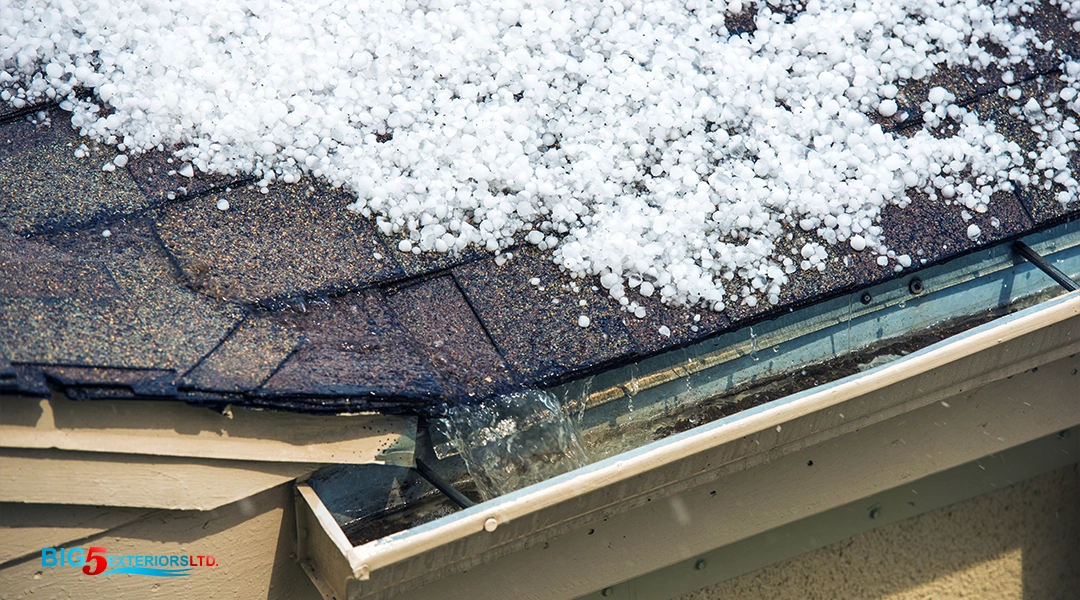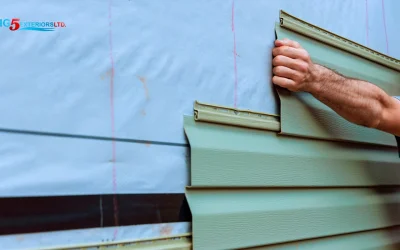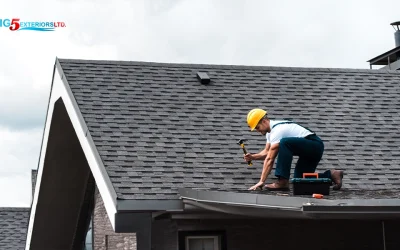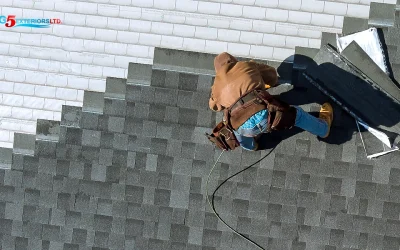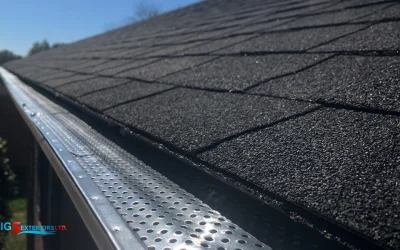Summary:
- When a hailstorm hits, it can cause a lot of damage to your home—some signs of damage are more obvious and some areas may need closer inspection.
- Homeowners should assess their home for physical damage including tears, dents, and other damage to their roof, eavestrough (gutters), and siding.
- Some upkeep following a hailstorm, like cleaning or securing gutters, can be handled by the homeowner.
- If significant damage causes you to need eavestrough, siding, or roof repairs or replacement, call the Big 5 Exteriors experts for excellent service and quality care.
If you’ve lived in Calgary for a year or more, you’re probably well aware of what’s coming this summer: thunderstorms and hail. Both create an incredible visual spectacle but for very different reasons.
Whenever we get nailed with a bunch of hail, we start receiving calls from homeowners shortly thereafter. It makes sense, too: the hail damaged their roof, eavestrough, siding, or all three. It’s unfortunate, but that’s why we’re here—to get your home back to looking (and feeling) pristine.
To that end, we’ve put together a step-by-step guide on how to spot hail damage, which areas of your home need assessment, what tools you’ll need, and what to do if you need to repair or replace your roof.
See Also: Preparing Your Home For Hail: Five Ways to Reduce Hail Damage
Step 1: Gather Your Tools
Before you start assessing your home for hail damage, you’ll need to gather some tools for a proper inspection. This includes:
- A properly-secured ladder (and preferably someone to spot you)
- A helmet or hardhat for protection
- Chalk to mark any areas of impact
- A small bag to gather any loose or damaged shingles
- A phone or camera to take photographic evidence—you’ll definitely want this for any insurance claims
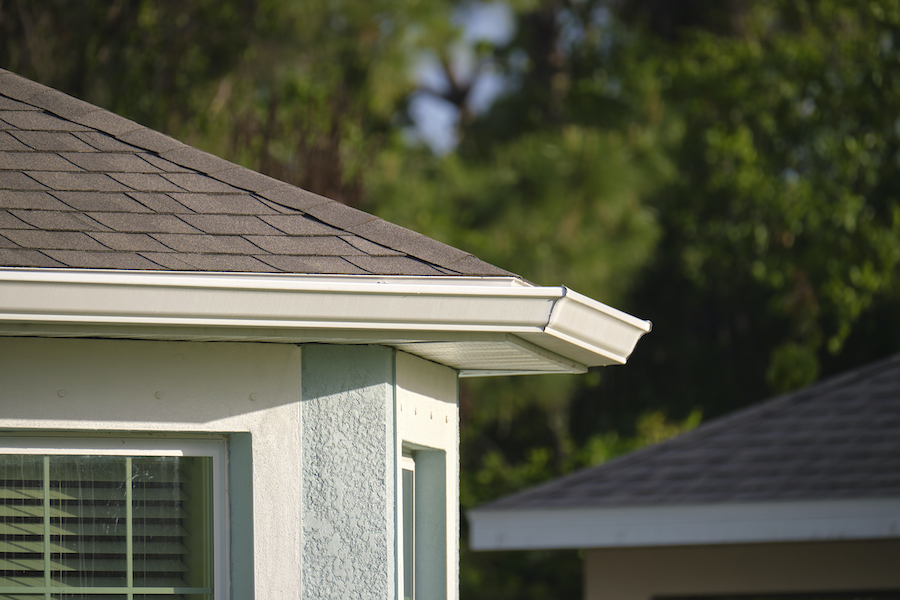
Step 2: Assess Your Roof & Shingles
The first place we recommend checking for hail damage is the roof, since it takes the brunt of the beating when it hails. You can get a good idea of the damage that was done before you even climb up on your roof. Here are a few things to look for at ground level:
- Asphalt wash. After a storm, you’re likely to find asphalt granules (called “asphalt wash”) along the ground, especially near downspouts. A little bit of wash isn’t a terrible thing; a significant amount of wash suggests that your shingles took a pretty big beating. Don’t forget to check your grass near any downspouts.
- Shingles on your lawn. Or driveway. Or street. If it’s not on your roof, you’ve got a problem.
Of course, hail damage isn’t always obvious from the ground, so now’s the time to grab your ladder and collection bag and head up to the roof. From here, you’ll look for:
- Missing, torn or damaged/dented shingles. Dents will puncture holes in your shingles, allowing water to seep into your underlayment, leading to water damage and attic insulation issues. Additionally, the punctures in your roof can cause water leaks to drip into your attic and even further into your home.
- Shingles that are curling or peeling away from the roof. This isn’t necessarily because of hail, but since you’re up there anyway, this is always a good thing to keep an eye out for.
Damage to your roof can lead to a number of other property issues if left unattended for too long, so it’s super important to address the problem right away. Depending on how extensive the damage is, you may be looking at a full or partial roof replacement versus a repair. Contacting one of our roofing experts is the most efficient solution to ensure the job is done properly and safely.
See Also: Is Your Roof Saying That It’s Time For a Replacement
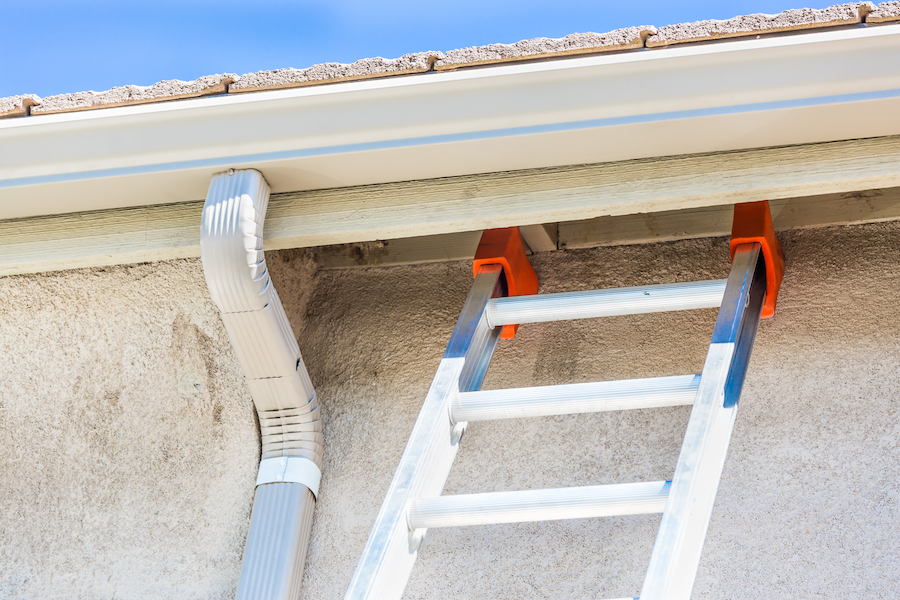
Step 3: Assess Your Eavestrough (Gutters)
Once you’re done assessing the roof, now’s a good time to check your eavestrough and gutters. Your eavestrough is fairly “set and forget”. Because of this, most people tend to forget about their eaves until their eaves give them a reason to think about them.
After a hail storm, it’s not uncommon to find:
- Physical damage to the eavestrough itself: This may be in the form of small dents/marks, though an older eavestrough (or an eavestrough that was installed poorly) may come loose from their hangers or “sag” in the middle. Be sure to check for both big divots and minor dents to your gutters. Even minor dents can cause water to leak out of the channel before it reaches your downspouts.
- Damaged downspouts: The soft metal used in downspouts is a target for hail and often shows some new scars after a storm. Check the end of the downspout and ensure it’s open and able to facilitate water flowing freely through it.
- Clogged eavestroughs: Clogged eaves can cause a number of problems, from water leaking over the sides to the eavestrough falling from the building (the additional water weight, combined with poor installation or rotting fascia boards, creates a “perfect storm” for this).
If you’re handy and don’t mind spending some time on the roof, it’s easy enough to clean your eaves to prevent further clogging. While you’re up there, pour some water in the eaves and observe how it drains. If it sits in the middle, your eavestrough should be re-sloped to facilitate proper drainage.
See Also: How to Clean Your Eavestrough Safely
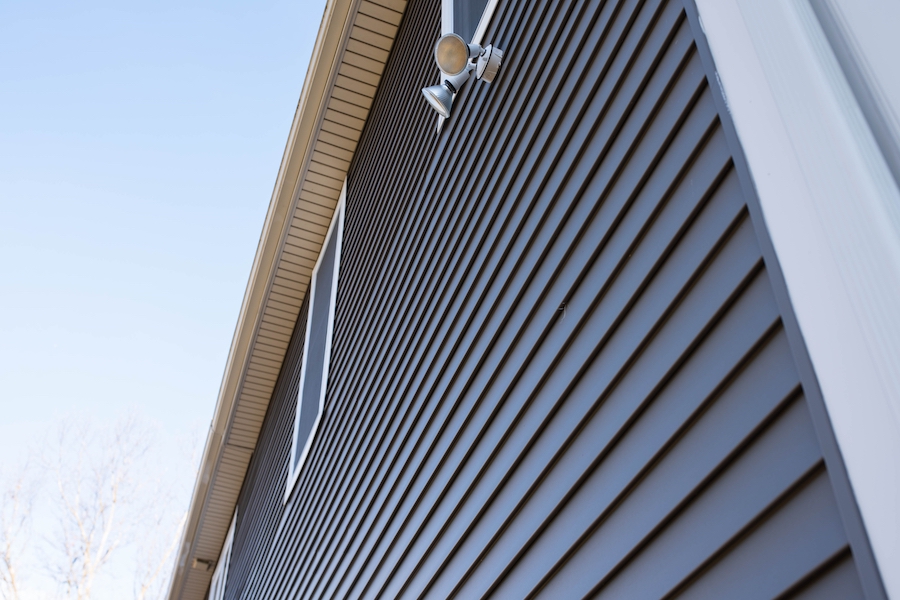
Step 4: Assess Your Siding
Most homes in Calgary use vinyl as their siding material of choice, and although the material is durable, vinyl siding is still prone to hail damage. Like your roof and gutters, damage to your siding leaves your home vulnerable to the elements, especially water.
When it comes to assessing hail damage to your siding, you want to look for:
- Siding that is peeling away from the building: This may not be as obvious as you think. Sometimes a piece of siding peels back in a corner but remains mostly intact. In these situations, water can easily creep behind the siding during the next rainfall.
- Siding that has been removed from the building: This is more common on older homes where both the siding and the material underneath it are beginning to show their age.
- Holes in your siding: Even if the siding doesn’t come off of the building, it’s not uncommon to find holes where a particularly stubborn piece of hail decided to leave its mark.
Again, damage to your siding may only look like aesthetic damage, but it’s much more intrusive than that. Siding damage can even weaken your foundation, leading to a spike in your energy bills over time. If your siding is damaged, it’s best to call one of our professionals to get it repaired or replaced as soon as possible.
Trust The Big 5 Exteriors Experts to Handle Your Home
No matter how big or small the damage is, hail damage shouldn’t be ignored. By learning the signs of hail damage and proactively checking your roof, eavestroughs, and siding each time it hails, you’re ensuring your roof will last much longer.
Need to get your roof repaired or replaced or have questions about your hail damage? Contact Big 5 Exteriors to speak with a certified expert who can recommend whether your roof needs a repair or replacement. For more details, browse our most frequently asked questions about roof hail damage and repair.
Frequently Asked Questions About Hail Damage
What Are The Long-Term Effects of Hail Damage?
Hail impacts can lead to dents, cracks, punctures, and granule loss in roofing and other materials, such as asphalt shingles, vinyl siding, and your eavestrough and gutters. This damage compromises the integrity of the roof and the rest of your home, making it more susceptible to water infiltration, leaks, and structural deterioration over time.
What Size Hail Can Damage a Roof?
Generally speaking, hailstones at least one inch in diameter can cause damage to a roof, eavestrough, and/or siding. Smaller hailstones can also cause damage, especially when accompanied by strong winds or when striking roofing materials that were not engineered to withstand hail impact. As hail size increases, the potential for damage also increases.
When Should You Have Your Roof Replaced?
Your roof probably needs to be replaced if you notice any of the following signs:
- Light or dark spots on your shingles (often a sign of missing granules)
- Shingles that curl up from the roof
- Widespread and visible mold, moss, or mildew
- Missing, dented, or broken shingles
The age of your roof should also factor into when you decide to replace it. If you’ve had your roof for more than 20 years, there’s a good chance it needs replacing—even if you don’t notice any of the signs above.
How Long Does It Take to Replace Your Roof?
Our turnaround time for an average roof replacement in Calgary is about 3 business days from quote to completion. This includes the removal of the old shingles and installation of the new ones. But the bigger the roof is, the longer the job takes—larger houses may require more time.
Note: these timelines can change after major hail storms and other weather events. During our initial consultation, we will advise you of our projected timeline.

